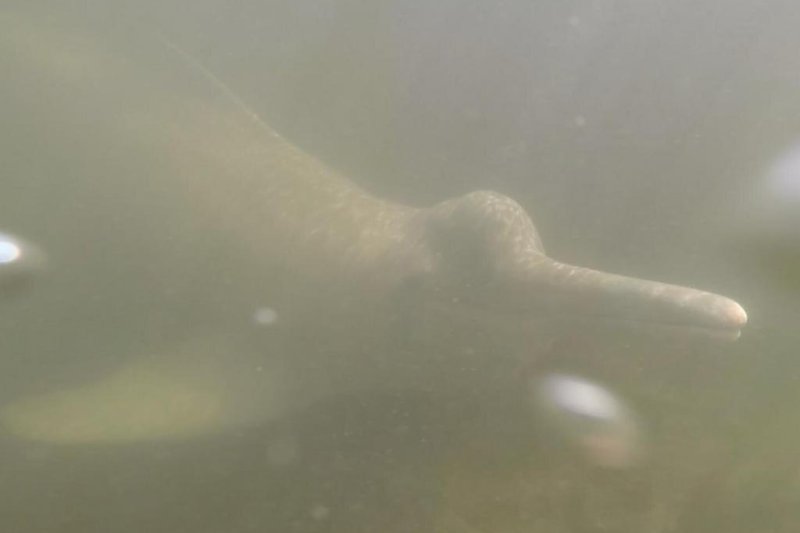Scientists recorded more than 270 sounds used by a mysterious river dolphin species in Brazil. Photo by Paulo Castro
April 19 (UPI) -- A mysterious river dolphin in Brazil, previously thought to be relatively silent, could offer new insights into the evolutionary origins of marine mammal communication.
It turns out, the river dolphin scientists thought was solitary and mostly speechless actually boasts an impressive vocabulary.
"We found that they do interact socially and are making more sounds than previously thought," Laura May Collado, a biologist at the University of Vermont, said in a news release. "Their vocal repertoire is very diverse."
Because Araguaian dolphins are skittish, they're difficult to study. But Gabriel Melo-Santos, a biologist from the University of St. Andrews in Scotland, found a riverside fish market in Brazil where the normally shy animals come to be fed fish by the locals.
Researchers regularly visited the fish market to watch the phenomenon and observe how the river dolphins behave and interact. The regular visits and clear river water allowed scientists to track individual dolphins and study the relationships between different individuals.
During their visits to the fish market, scientists collected 20 hours of vocal recordings and identified 237 different types of sounds. But researchers suspect they've only observed a portion of the dolphin's full vocal repertoire.
The vocalizations of the Araguaian dolphins feature a unique mix of low-frequency calls, most commonly used by baleen whales to communicate across great expanses of ocean, and high-frequency calls used by marine dolphins for more intimate conversations.
The species' unique habitat likely shaped the evolution of the dolphin's vocabulary.
"There are a lot of obstacles like flooded forests and vegetation in their habitat, so this signal could have evolved to avoid echoes from vegetation and improve the communication range of mothers and their calves," May Collado said.
Scientists heard one particular type of sound more than others: short, two-part calls used by babies as they swam toward their moms.
"It's exciting; marine dolphins like the bottlenose use signature whistles for contact, and here we have a different sound used by river dolphins for the same purpose," said May Collado.
River dolphins diverged from cetaceans earlier than other dolphins, making them evolutionary relics. By studying these dolphins and comparing their vocabulary to the communication abilities of other closely related river dolphins, scientists expect to gain new insights into the evolution of marine mammal communication.
Scientists shared their analysis of the Araguaian dolphin's vocalizations this week in the journal PeerJ.















